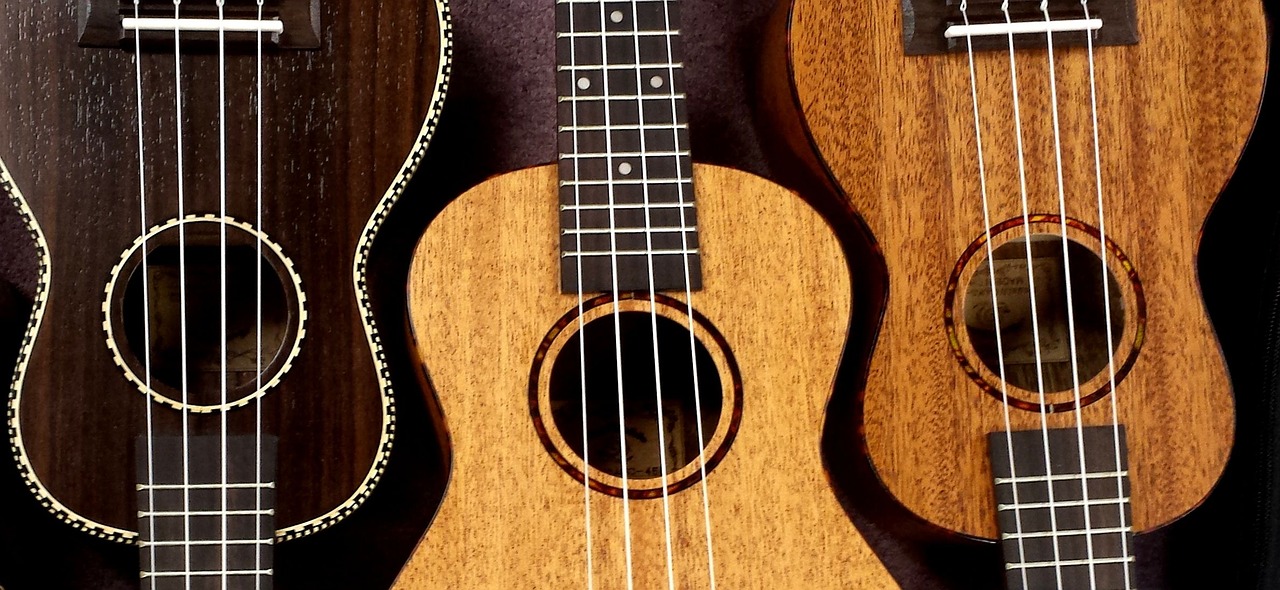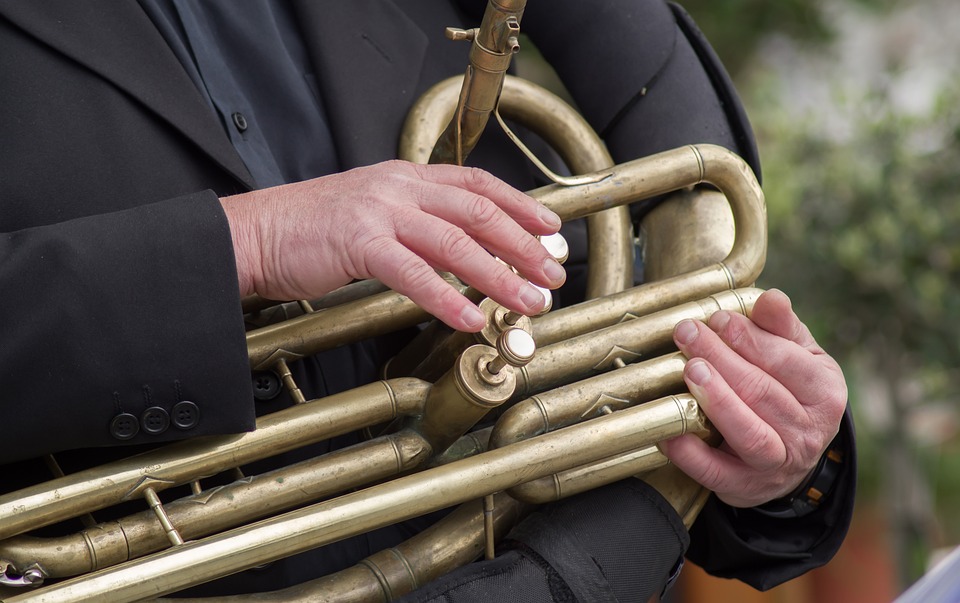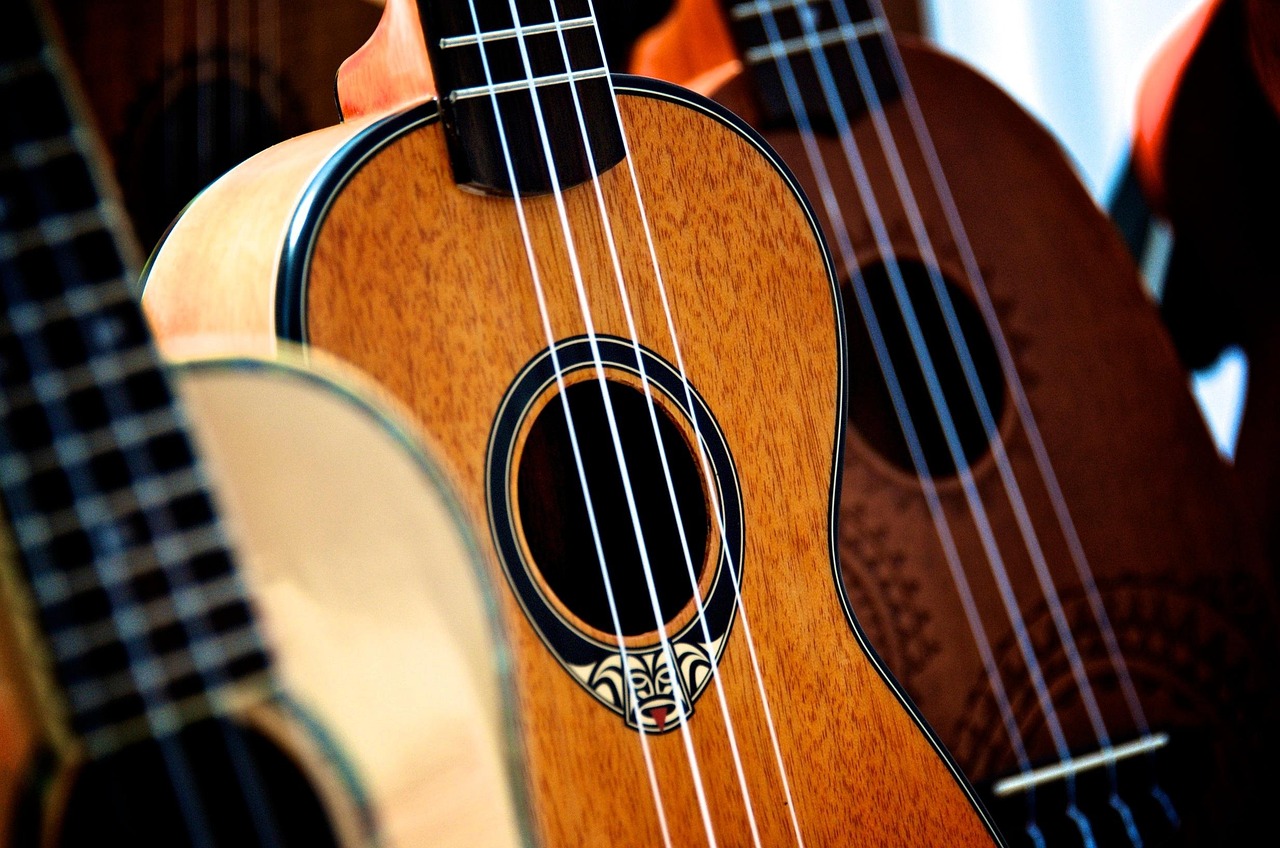Know the Essential Guitar String Names
Janvi Arora
- 11 July, 2024
- 9 min read

Table of Contents
“There are two kinds of music. One comes from the string of a guitar, and the other one comes from the strings of the heart.”
Michael Jackson
With guitar, you can bring a melodic blend of chords and create never-to-be-heard riffs and epic guitar solos, just like Jimmy Page from Led Zeppelin. But in order to harness the true potential of the guitar, it is important that you first learn its fundamentals such as guitar string names.

Today, we are going to showcase tips for learning string names. It not only helps you in playing guitar but also makes it possible for you to communicate with other musicians. Learning string names is important because it helps us find where notes are placed on the fretboard. Guitar string names might look intimidating at first, but with time and by following our guidance, you will be able to navigate the fretboard with ease. So, let’s begin.
How Many Strings Are There In A Guitar?
The guitar has 6 strings, Listed from low to high, the guitar string names are: E, A, D, G, B, and E. Each of them is different from one another on the basis of their thickness. The thinnest string will be present at the start, and from there, you will see an increase in thickness. String number 6, which is the thickest of them all, is present at the topmost.
Also, you need to know that the thicker the string is, the lower its pitch, so when you are moving from string 1 to upwards, you will start from a high pitch and then slowly come to a lower pitch. Even with just six strings to play with, you get a range of almost four octaves.
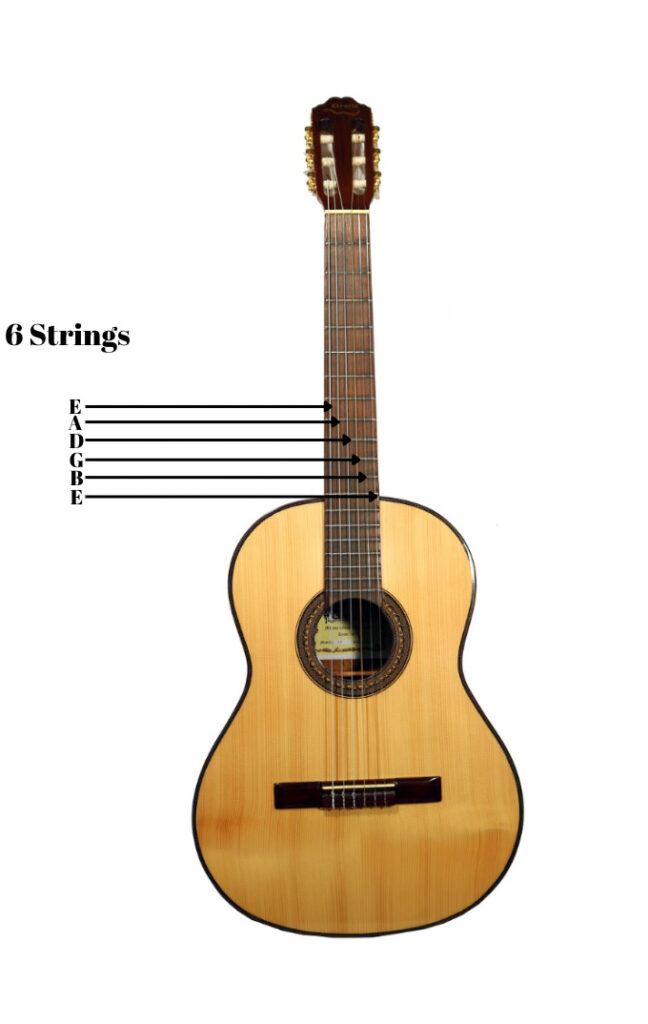
Apart from 6 strings, you can also find guitars such as bass guitars having 4 strings, and there are 12-string acoustic guitars that are majorly used for rhythm playing. After a lot of discussion and experimentation, musicians in the past have reached the conclusion of using EADGBE as the base tuning for all guitars. This allows you, as a guitarist, to play both chords and melodies with ease.
The Quickest Way To Learn Guitar String Names
There are tons of patterns from which you can learn guitar string names, but we are keeping things simple here by discussing only three methods in detail.
i. Acronym Method
Acronym simply means finding a short form for a long phrase; in the case of learning guitar string names, the acronym is EADGBE. The order in this acronym is from thickest to thinnest string, and it is used in acoustic guitar playing. In addition to this, the acronym for bass guitar goes like this: GDEA.
ii. The Mnemonic Method
With the Mnemonic method, you get to recall and retain information by expanding the short form into long phrases. Here, each letter of the first word is going to stand for the specific string of the guitar. The location of the word in the sentence represents the position of the string on the guitar fret. When we tie words to the standard guitar tuning, it becomes much easier to remember them.

Let’s take a few examples of EBGDAE guitar tuning:-
- Eat All Day Get Big Easy
- Eddie Ate Dynamite, Good Bye Eddie
- Eric And Dave’s Guitars Beat Everyone
- Elephants And Donkeys Grow Big Ears
- Even Average Dogs Get Bones Eventually
- Every Apple Does Go Bad Eventually
All of these sound similar when you speak and are easy to remember. In addition to these, you can also come up with your own mnemonic if you want to; all you need to do is make sure that your phrases are weird. The more crazy you make it, the more memorable it becomes. See, a mnemonic doesn’t have to make sense. It just has to be unusual and catchy for you to remember.
iii. The Numbering Method
With the numbering method, you will be assigning a specific number to each string based on its position. It is your choice to either start from the bottom or start from the top. Here, we are going with the bottom-to-top approach, from the thinnest string to the thickest string.
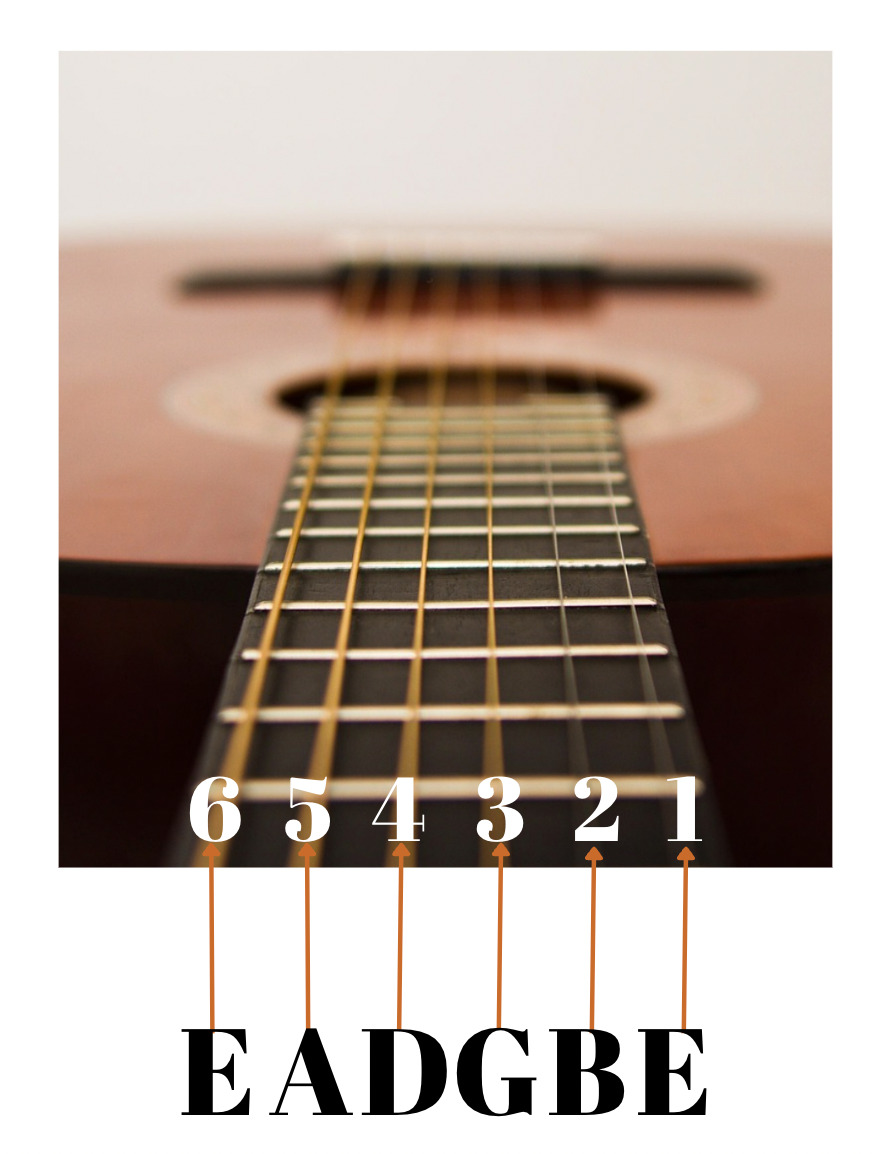
- In this case, you can mark the thickest string as the 6th string, which is tuned to E and is referred to as the Low E string.
- The 5th string is going to be your second thickest string, which is tuned to A and also referred to as A string.
- Then comes the 4th string, tuned and referred to as the D string.
- 3rd string is tuned and referred to as the G string
- 2nd string, which is the second thinnest on the guitar, is tuned and referred to as the B string
- The last string will be given the number 1st, and it is tuned for E and is also known as a high E string.
iv. Color Coding
You can take help from coloured stickers or assign one colour to each string. After that, when you are playing the string, you need to recall the colour you assigned to it in the beginning. With time and practice, you will start recognizing colours with their respective strings and notes.
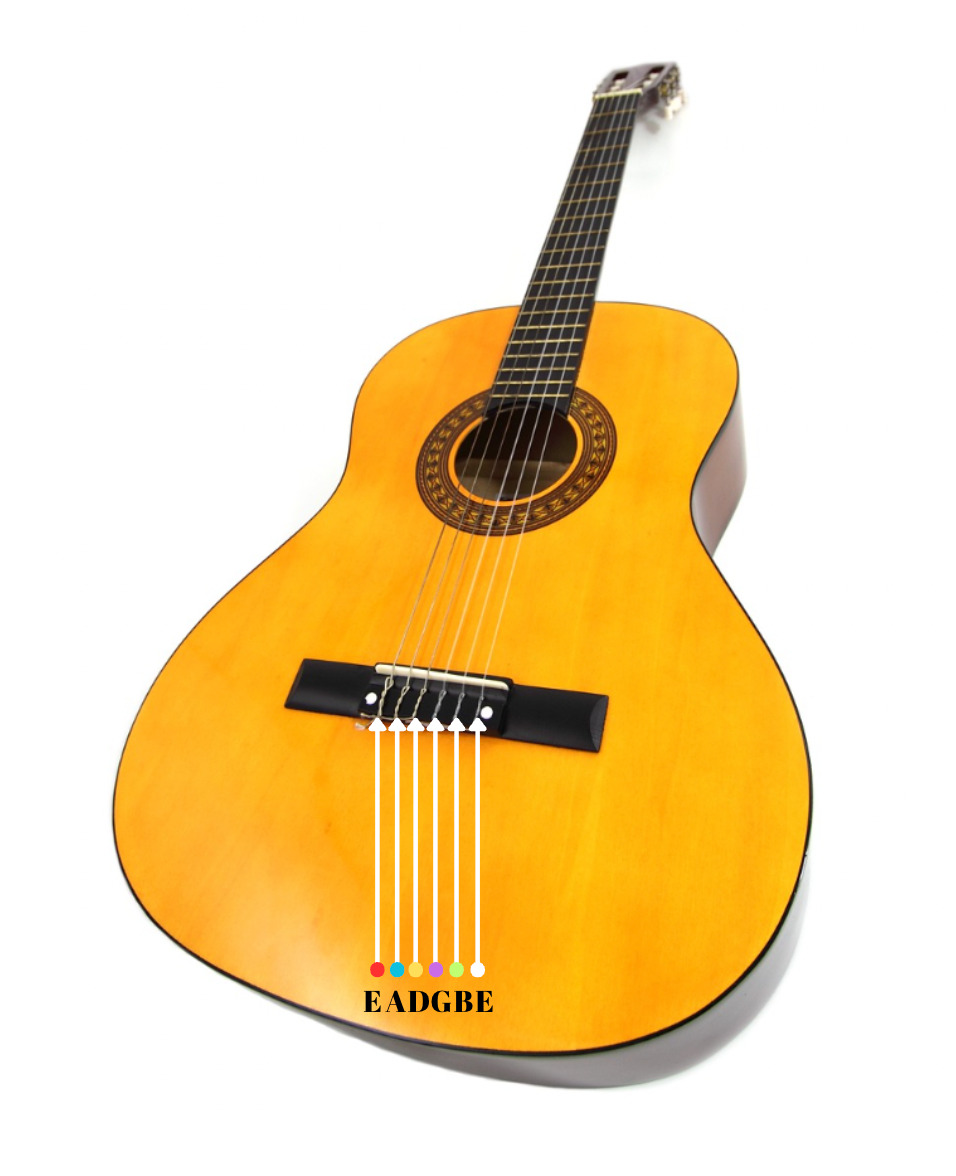
- E -> Red
- A -> Blue
- D -> Yellow
- G -> Purple
- B -> Green
- E -> White
Exercises For Memorizing String Names
See, having an understanding of guitar string names is one thing; applying that theoretical knowledge in practice is the real deal. Below, we have provided a few exercises that will allow you to memorize the string names while you are learning to play guitar. Tap here to learn more about the Guitar Warmup Exercise.
One-String Scales
As a beginner, you are always going to start your guitar practice by playing a single string. When you are practising the single string, it would be great if you could mentally repeat the name of the string you are playing. This way, you will be strengthening your memorization of the string name and enhancing finger agility and familiarity with the fretboard. Master your skill with Torrins Guitar Scale Series.
Performing String-Naming Drills
Whenever you get some free time, you should perform the string naming drills by closing your eyes and plucking an open string, meaning you don’t have to play a chord. Now, when you are plucking a string, it will create a sound; give a name to that sound and repeat it aloud as you pluck it repeatedly.
Do the same for other strings as well, and keep adding variations to it. When you perform this drill over time, you are going to develop an aural recognition of strings, and even with your eyes closed, just by listening to the sound, you can make out which string is being played by the guitarist.
Using Fretboard Navigation To Learn String Names
Fretboard can come quite handy if you are new to guitar playing. The other name of fretboard is fingerboard, so don’t confuse yourself. It is a long strip of wooden material with lamination at the front, and on top of the lamination, you will have strings running from top (nut) to bottom (bridge). The fretboard on a guitar allows you to play different notes by placing your fingers on different locations on the string. When you press down the finger, it will change the vibration of the string, which ultimately leads to a change in the pitch of the string.
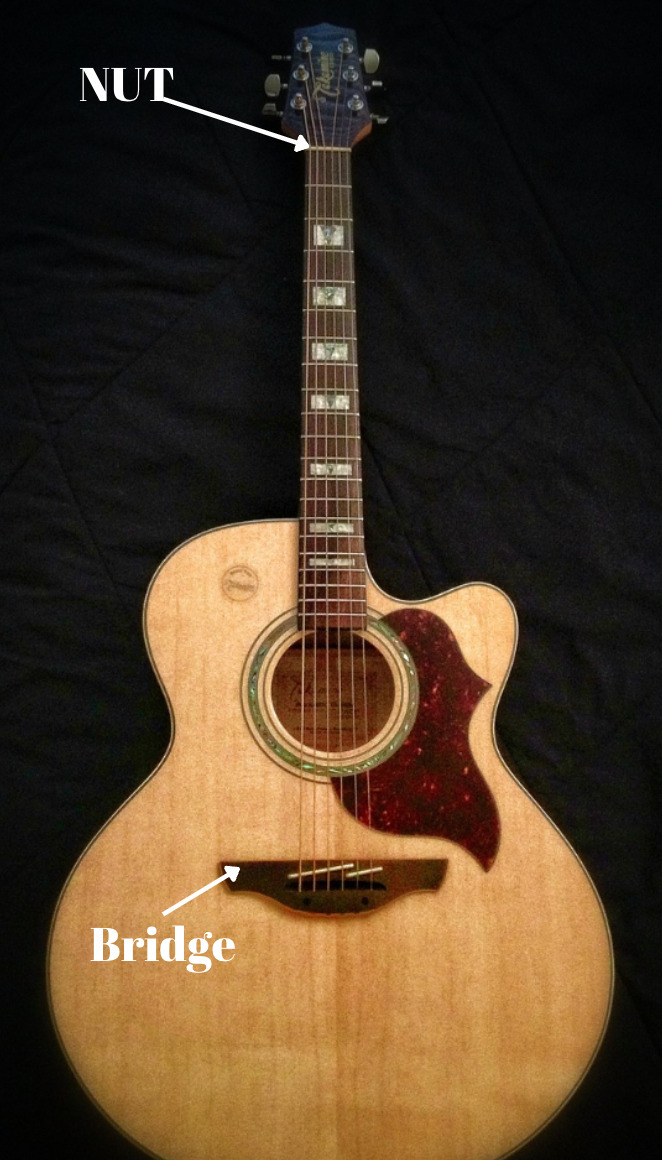
In order to use the fretboard to learn string names, you should first pick up any note on the fretboard and try to find out which string is in use for playing it. This way, you will understand the connection between string and different notes, their location on the fretboard, and their corresponding string names.
You can learn in detail about the Anatomy of the Guitar and String Names here at Torrins.
The Importance of Knowing Guitar String Names
There are three main advantages of knowing guitar string names:-
Allows Communication
With the knowledge of guitar string names, it becomes easier for you to interact with musicians and with your musical tutors as you will have the same proficiency as them and be more professional in learning complex techniques that they use for playing and learning new songs or solos.
Increases Your Understanding Of Musical Theory
With step-by-step learning of songs on guitar, you will soon have your first encounter with music theory. If you haven’t learned the string names, it will be almost impossible for you to understand music theory topics like scales, octaves, chords, and intervals.
Faster learning
After you learn the string names of a guitar, it will be much easier for you to progress forward and start practising new chords, songs, and progression techniques with much better efficiency.
Wrapping Up
So there you have it, all the essential methods that will help you learn guitar string names. It is important not to rush this process and take your time with it if you are new to guitar playing. These basics will guide you on a long journey to becoming a master guitarist. To master your skill, join guitar lessons with expert guidance at Torrins. With string names printed in the back of your mind, it will be much easier for you to find your way around the fretboard.
Before we go, there’s one thing we would like you to know, and that is that learning guitar is surely a time-consuming thing. But in the end, it is all about having fun and finding a way in which you can express yourself better. You can check out videos made by professional musical tutors at Torrins, where they show you how to play the guitar while keeping things fun and easy. So don’t be too scared about chords, notes, and progression; hop in to begin your musical journey now.
Explore free guitar lessons to kickstart your musical career.

